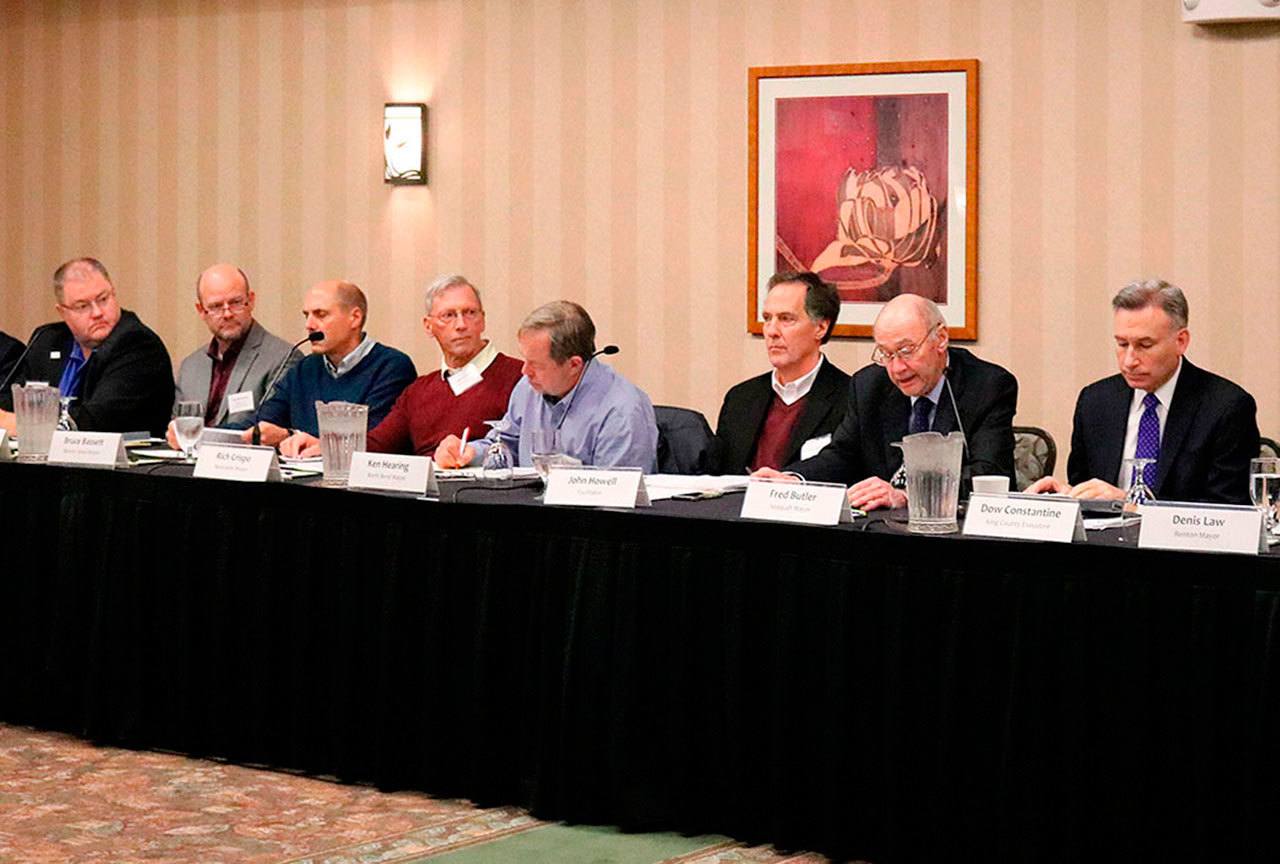Elected officials from the city, state and county levels gathered with transportation experts on Nov. 22 at the Hilton Garden Inn in Issaquah to discuss one of the region’s biggest concerns — traffic and its growing impact on Eastside roadways.
Issaquah Mayor Fred Butler organized the event to look for a way that the entire region could come together to work on a problem that affects everyone.
“Finding regional solutions for addressing traffic flow is essential,” Butler said. “Years from now, I hope we can look back on this first meeting as an important turning point in addressing traffic flow.”
Mercer Island Mayor Bruce Bassett was in attendance, as cut-through traffic has become a significant city issue and is expected to get worse as construction and congestion on Interstate 90 continue.
Speaking about the long-term future of traffic on the Island, Bassett said, “It’s really all about how well light rail can work for our citizens, how they can access light rail well, as well as how I-90 flows and how light rail works for all of us so it’s a successful way for folks to move, even in light of the congestion that’s coming.”
Eight other mayors — from Sammamish, Bellevue, Renton, Newcastle, Snoqualmie, North Bend, Maple Valley and Covington — also participated in the event, as well as King County Council members, state legislators, Sound Transit CEO Peter Rogoff, representatives from the Washington State Department of Transportation, King County Metro and the Sound Cities Association, and even the superintendent of the Issaquah School District, Ron Thiele.
Over 100 people attended the summit to observe the proceedings.
Butler especially highlighted the Issaquah-Hobart Road as problematic, noting that the pass-through traffic on the road makes driving downtown a nightmare for Issaquah locals.
But Issaquah-Hobart Road was not the only thoroughfare deemed to have issues.
“State Route 18 is at a level-F; it’s already in failure,” Snoqualmie Mayor Matt Larson said.
Sammamish Mayor Don Gerend said that his city’s residents “don’t have a direct route from Sammamish to Seattle.” One of the options to get out of town is to take State Route 202, but “it chokes up” frequently, he said.
King County Executive Dow Constantine noted that 260 people either move to or are born in King County every day, a statistic that means congestion will only increase in the future.
Crisis-level traffic even affects the school district, Thiele said, as teachers who live in more affordable areas of the county do not want to battle the traffic to get to Issaquah every day.
“It’s actually preventing us from being able to implement innovative things that we want to do,” Thiele said. “People are just not willing to live in Auburn and commute to Issaquah. I’ve never seen a hiring crisis like we have now.”
A variety of ideas for solutions were tossed around during the last hour of the summit, such as better access to public transit, finding new sources of revenue for road projects, improved bus transit and maximizing parking at park-and-rides.
With an eye to the future, Gerend discussed self-driving bus routes and government-subsidized Ubers for the elderly.
One thing that everyone agreed on, however, was the need to work together.
“This is not just a city-by-city issue, this is not just a county roads issue, this is not just a state highway issue,” said Deanna Dawson, executive director of the Sound Cities Association. “This is a crisis in terms of funding and prioritization in this region.”
“Three things come to my mind — collaboration, coalition and together,” Butler said. “I think this conversation has been a great start.”
“The problems we’re identifying here are really regional,” King County Councilmember Claudia Balducci said. “We could have the same conversation across King County.”
The group plans to meet again in the spring of 2017.
“I do believe we all have a better appreciation of what’s killing us in our community, and I do believe that through this conversation we have hope,” Butler said at the end of the meeting. “But we’re not going to solve it in an afternoon.”
He told the Reporter that the summit “went very well. You can tell by the enthusiasm in the room … that everyone is committed to solving regional pass-through traffic.”


